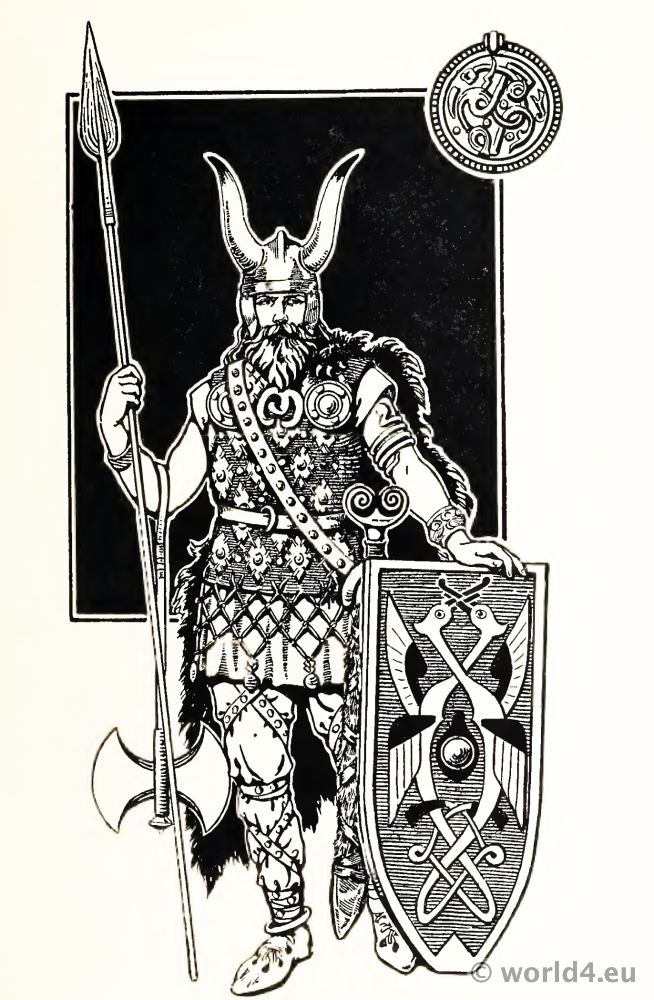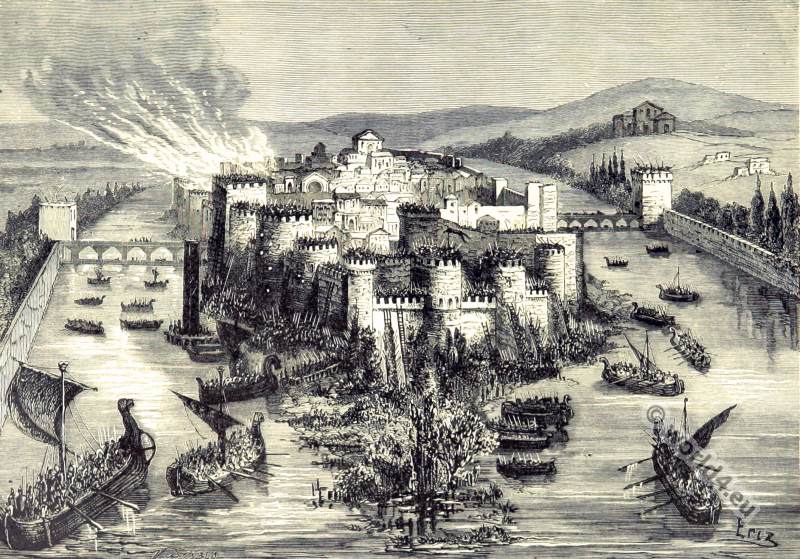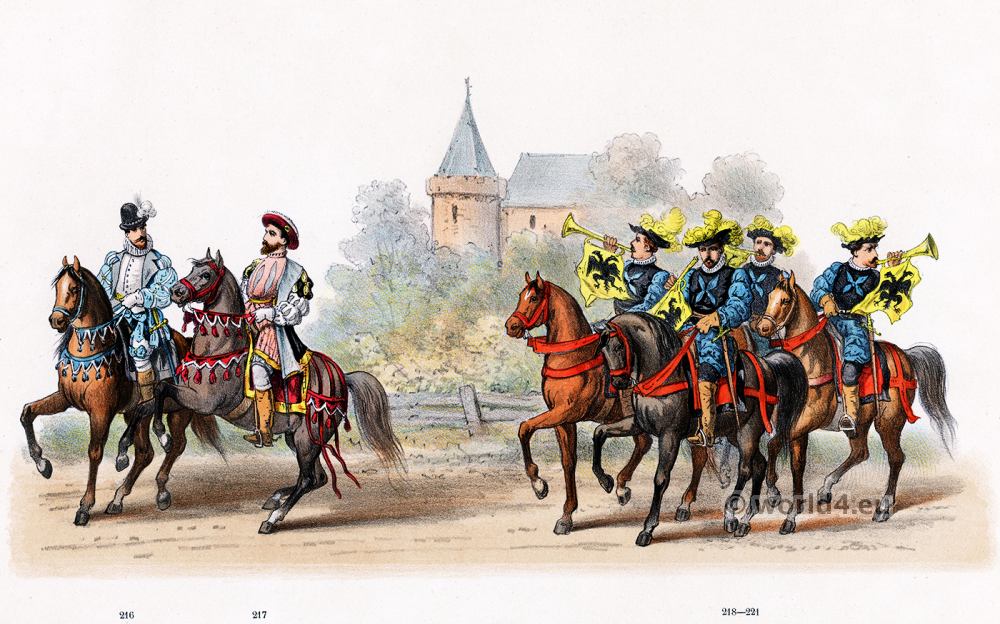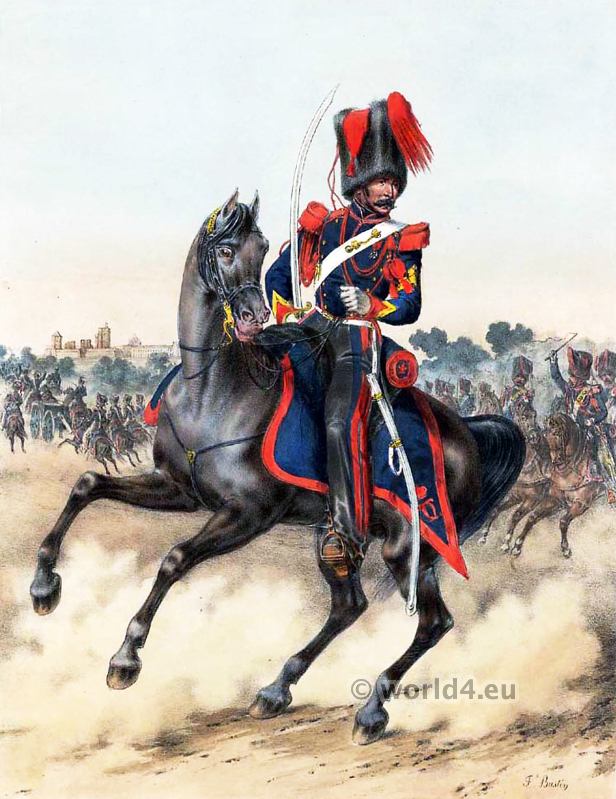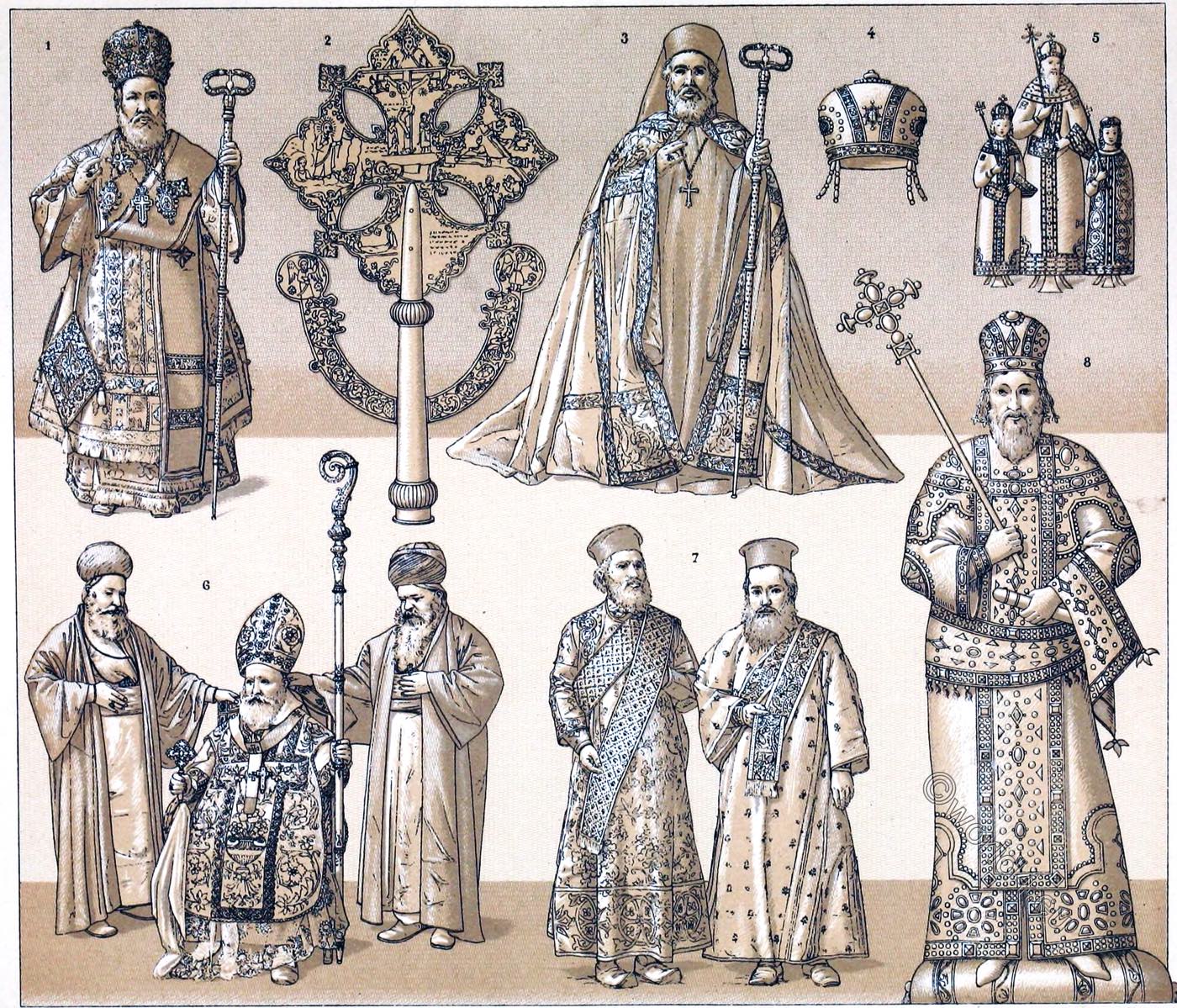The Varangian Guard
At the end of the tenth century the Varangian Guard, an Imperial bodyguard, were a conspicuous, picturesque, and useful adjunct to the Byzantine Court. They were recruited from the most perfect specimens of manhood found in Scandinavia.
Previous to this date (980), they were serving the chief of their kinsmen, the Ruotsl (Slav: Rüs = Russians), but this chief or prince of the Russians, Vladimir the Great (980-1015), finding them somewhat self-assertive, suggested his neighbour Basil II. that they should be taken into his employ — a proposal which he adopted. The Varangian Guard were bound by oath (“vár” = Scandinavian for “oath “) to the emperor’s service, and were in constant personal attendance on all occasions, ceremonial or domestic. They remained loyal to the reigning emperor, and upheld the Byzantine throne to the bitter end.
Viking of the Varangian Guard (and for Viking Chiefs from the Fifth Century onwards).
His outfit consists of a tunic called the “kyrtil,” of the same shape as the colobium. Over this is probably a shorter one of skin called a “hjup,” and on top the coat of mail, “brynja,” made of leather and covered with metal plates or iron rings sewn close together. Over this again several metal ornaments are placed, and the sword-belt is slung over the right shoulder. A large skin hangs from the shoulders. The legs are covered with bracco (Scandinavian: “braekr”) cross-gartered all the way up the leg, and shoes of leather of primitive make are worn on the feet.
The helmet, “hjalm”, is of iron, with very large bull’s horns — a decoration much affected by Teutonic peoples — attached to it, and flanges on each side of the face. The most important men had helmets of gold. Long fair hair fell from under this helmet, and long beards and moustaches were worn. The shield was sometimes round, and sometimes as shown in the illustration, made of wood covered with leather, braced with a rim, and furnished with a boss of iron or bronze. It was decorated in a fantastic manner. Weapons carried were: (i.) The spear, the iron head often being richly ornamented, and inlaid with gold and silver. The shaft, made of ash, was eleven feet long and rarely exceeded one inch in diameter, (ii.)
The axe, a very formidable weapon with a heavy double-bladed head, was slung from the belt or carried in the hand, (iii.) A sword of iron, with an elaborate hilt of iron, bronze or gold, inlaid with stones or ivory, and richly engraved, was carried in a scabbard of wood covered with skin, and bound with leather and metal studs.
Related
Discover more from World4 Costume Culture History
Subscribe to get the latest posts sent to your email.

